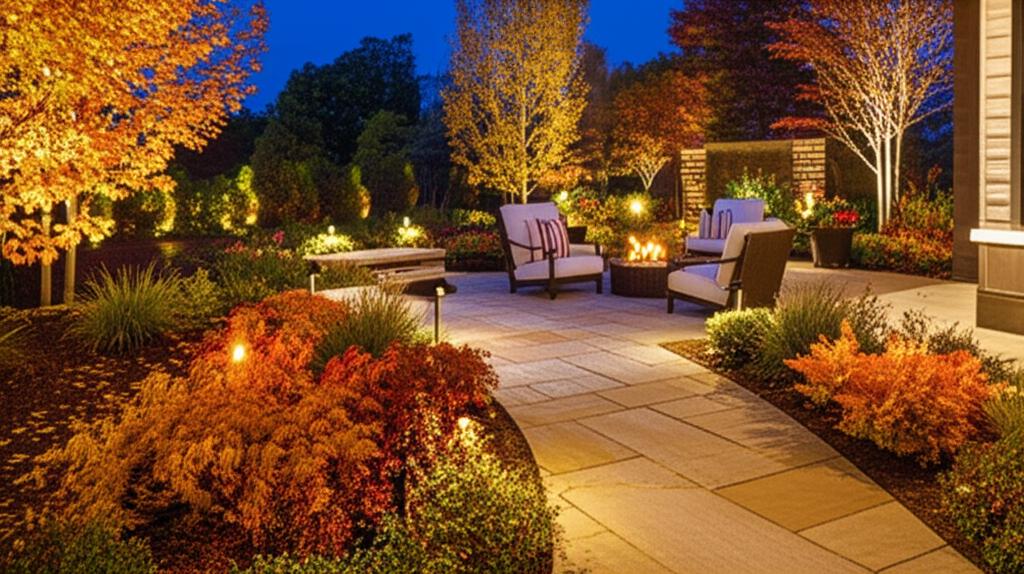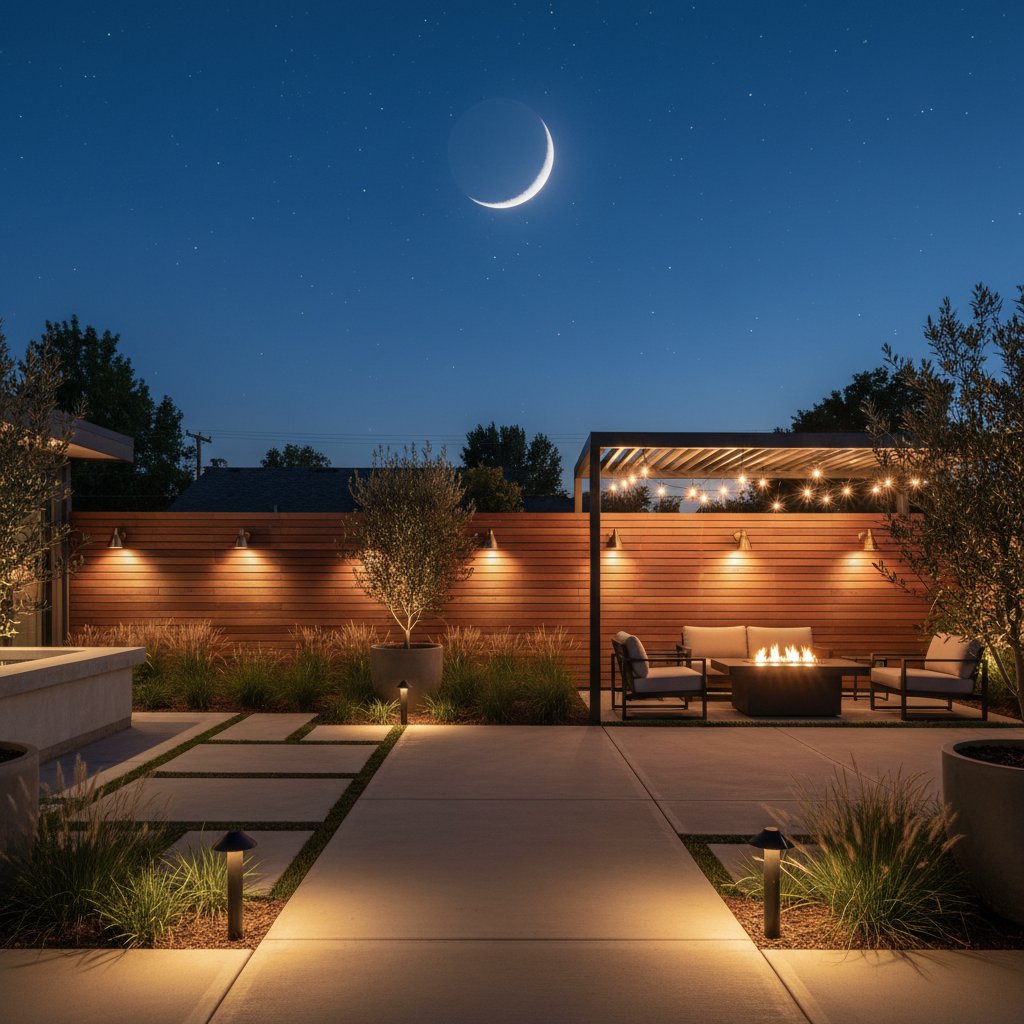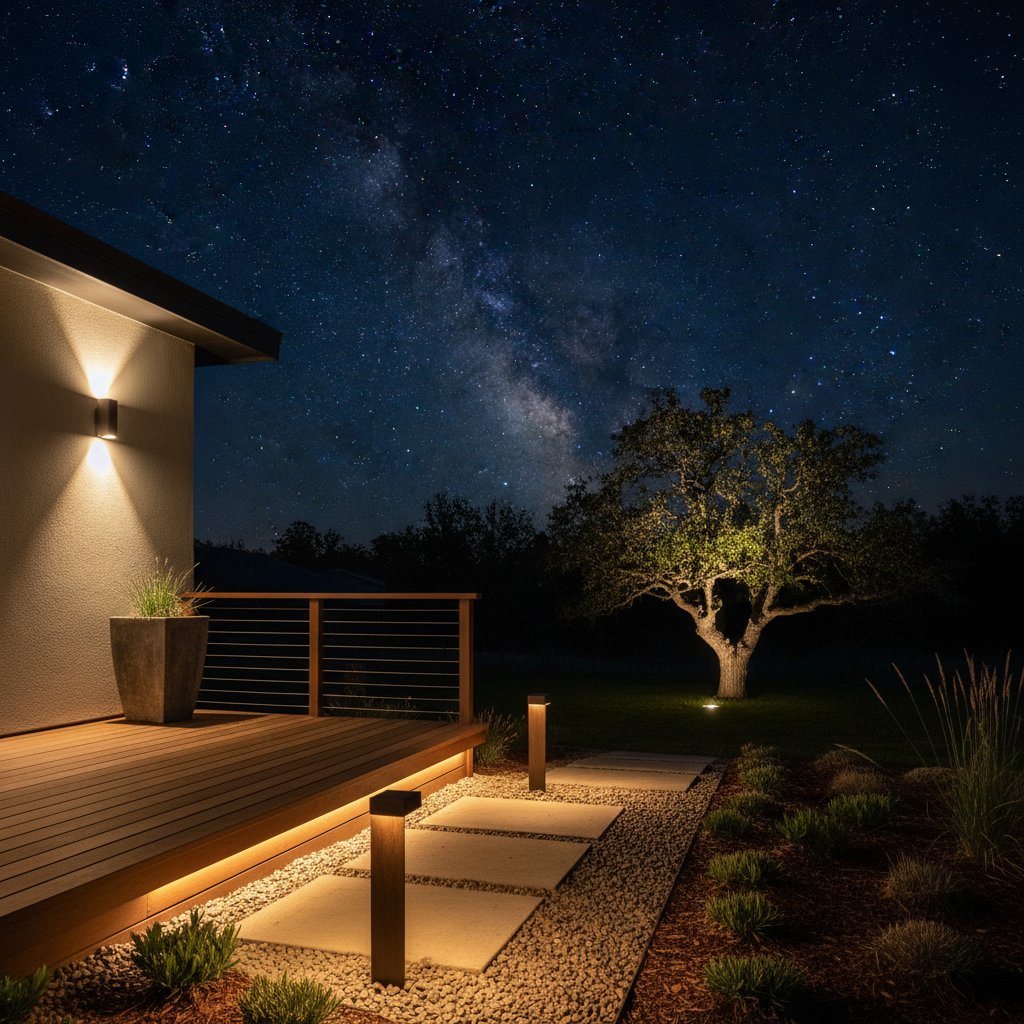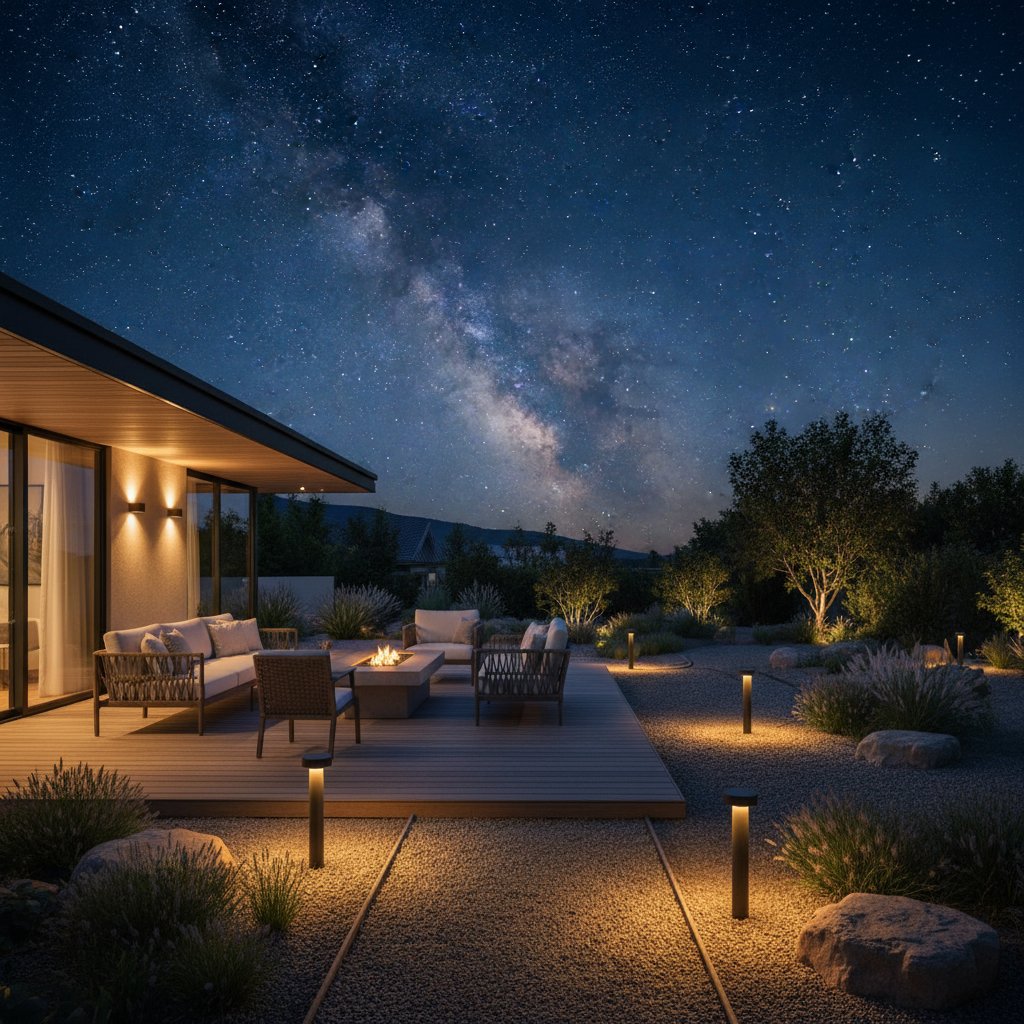Illuminate Autumn Evenings with Efficient LED Lighting
Autumn evenings carry a comforting yet transient quality. Cooler air arrives, leaves display vibrant hues, and daylight fades sooner. Standing in the yard at dusk reveals how shadows quickly obscure familiar paths and patios, shortening time spent outdoors.
LED lighting serves as an effective solution to reclaim these spaces. This technology proves efficient, dependable, and adaptable, transforming practical needs into opportunities for enhanced ambiance.
Adapting Outdoor Spaces to Seasonal Changes
Seasonal shifts prompt adjustments in daily habits, such as adding layers or retreating indoors. Outdoor areas need not diminish in relevance during autumn. Proper lighting maintains their appeal, allowing continued use after dark.
Well-placed lights facilitate safe movement along walkways, social gatherings on decks, and quiet appreciation of the evening. Without illumination, the garden recedes into obscurity; with it, even modest features radiate inviting warmth.
Advantages of LED Technology for Outdoor Use
LED lighting revolutionizes outdoor illumination compared to traditional options. Earlier bulbs demanded high energy and required frequent replacement. LEDs deliver superior performance across key areas.
- Energy Efficiency: LEDs consume significantly less power, resulting in reduced utility costs and the ability to operate lights extended periods without concern.
- Durability: Individual fixtures endure far longer than halogen or incandescent alternatives, minimizing upkeep and replacements.
- Weather Resistance: Designed for outdoor conditions, LEDs perform reliably through dampness and chill.
- Versatility: Available in various color temperatures and intensities, LEDs enable customization to match desired atmospheres.
This combination of function and aesthetics elevates outdoor experiences beyond mere cost savings.
Creating an Autumnal Atmosphere with Light
Autumn calls for lighting that emphasizes warmth over intensity, differing from summer's brighter setups. Modern LEDs offer soft, golden tones that evoke candlelight or lantern glow, countering any past perceptions of harshness.
Warm LEDs on a patio foster intimate conversations. Along pathways, low-level fixtures provide gentle guidance without starkness. Integrated with fall foliage, these lights accentuate seasonal colors like oranges and reds, keeping the garden vibrant after dark.
Strategic Placement of LED Fixtures
Selecting placement begins with identifying space functions. Layered lighting enhances usability without overwhelming the area. Focus on purpose-driven illumination for optimal results.
Pathways and Entry Points
Prioritize safety by illuminating walkways, stairs, and entrances. Install low-profile bollard lights every 5 to 10 feet along paths to mark routes clearly. Embed step lights into risers for subtle elevation highlighting, reducing accident risks while adding elegance.
Social and Dining Areas
Balance overhead and task lighting in decks, patios, or kitchens. Opt for multiple low-wattage sources, such as string lights draped 8 to 10 feet above seating or recessed deck fixtures spaced 4 feet apart. Wall sconces positioned 6 feet high provide even coverage without glare.
Planting Areas and Borders
Accentuate rather than flood garden beds for atmospheric effect. Position uplights 2 to 3 feet from tree bases to showcase branches. Tuck low-voltage spotlights into soil borders to trace plant outlines, selecting 2 to 4 focal points per bed to avoid over-illumination.
Aquatic Elements
Enhance fountains, ponds, or birdbaths with underwater or edge-mounted LEDs. Submersible units rated for wet locations create dynamic reflections on water surfaces. Aim beams at 45-degree angles for a soothing, energy-efficient shimmer.
Selecting Color Temperatures
Color temperature influences mood through Kelvin ratings. Warm options (2700K to 3000K) emit yellowish hues, while cool ones (4000K and above) produce bluish tones.
- Warm Lighting: Ideal for gathering spots and entries, promoting coziness that aligns with autumn's palette.
- Cool Lighting: Suited for task or security needs, offering crisp definition for structural highlights.
Warm tones generally suit fall settings, though selective cool accents add visual interest to specific features.
Achieving Balance Through Restraint
Overlighting often detracts from a yard's appeal, creating flatness akin to excessive paint on canvas. Prioritize subtlety by illuminating 20 to 30 percent of the space, allowing shadows to define depth.
Begin with minimal fixtures, such as three to five units per zone. Observe usage over evenings, then adjust. This approach ensures light enhances rather than dominates natural elements.
Realizing Energy Benefits
LED efficiency empowers prolonged use without financial burden. Low-wattage path lights, for instance, draw under 5 watts each yet provide hours of illumination at minimal cost.
Contrast this with legacy bulbs that escalate bills for similar runtime. Such savings encourage integrating lighting into routines, making the garden a seamless extension of indoor life.
Incorporating Smart Features
Enhance control with timers, sensors, and dimmers. Program dusk-to-dawn timers for automatic operation, conserving energy during unused hours. Motion detectors activate lights near entrances, combining security with efficiency.
Dimmers allow mood adjustments from 10 to 100 percent brightness. These tools refine usability, ensuring lights activate precisely when required.
Integrating Lights with Landscape Features
Embed fixtures within hardscape for seamless design. Retaining walls accommodate integrated uplights every 6 feet to graze surfaces softly.
Stone steps benefit from toe-kick LEDs for safe footing. Pergolas support woven string lights at 12-inch intervals, blending festivity with structure. This method yields a cohesive, professional appearance.
The Impact of Lighting on Well-Being
Lighting influences emotions by shaping perceptions of space. A illuminated path instills confidence during evening strolls. Warm glows over gatherings nurture connection and joy.
Reflections on water features promote tranquility amid fading twilight. These sensory elements enrich autumn experiences, fostering lasting memories.
Seasonal Customization Strategies
Adapt lighting annually to reflect changing landscapes. In autumn, emphasize warm uplights on colorful leaves. Winter setups might incorporate brighter perimeter lights for visibility.
Spring favors diffused downlights on emerging blooms. LEDs' longevity supports experimentation, with repositioning requiring only basic tools like adjustable stakes.
Planning Your Lighting Layout
Evaluate usage patterns to inform decisions. Identify frequent dark-hour paths, social zones, and hidden gems worth revealing.
Sketch a simple site map marking these areas. Consult local codes for low-voltage installations, typically under 12 volts for safety. This targeted method personalizes the design to your lifestyle.
Evolving Your Outdoor Illumination
After installation, monitor the setup's performance. Note how lights influence evening routines or guest interactions. A single tree spotlight might emerge as a standout element.
LEDs permit easy modifications, such as swapping bulbs for color shifts. View the system as progressive, refining over time to match evolving needs.
Implementing Your LED Plan
Commence with targeted zones, like a single walkway or patio corner. Source weatherproof, UL-listed fixtures from reputable suppliers. Professional installation ensures code compliance for wired systems.
Emphasize warm, diffused outputs to complement garden aesthetics. This foundational step reveals lighting's potential to sustain seasonal enjoyment.
Through efficient LEDs, autumn gardens gain extended vitality. Safe, inviting spaces encourage outdoor engagement, blending practicality with enduring beauty.



